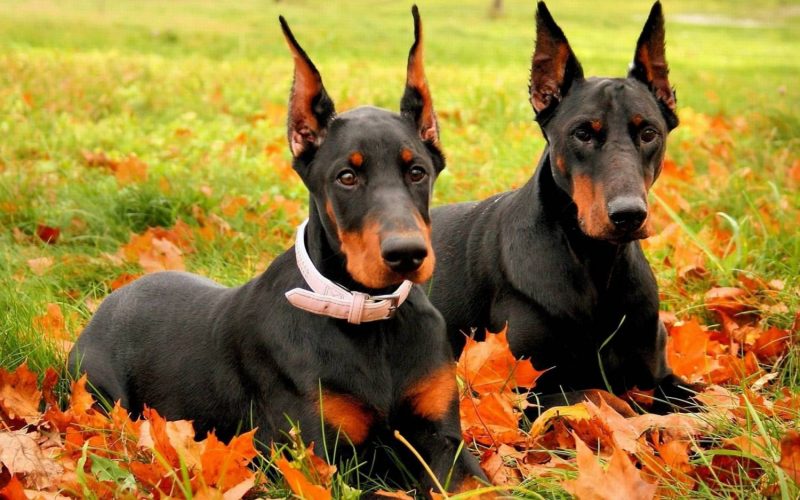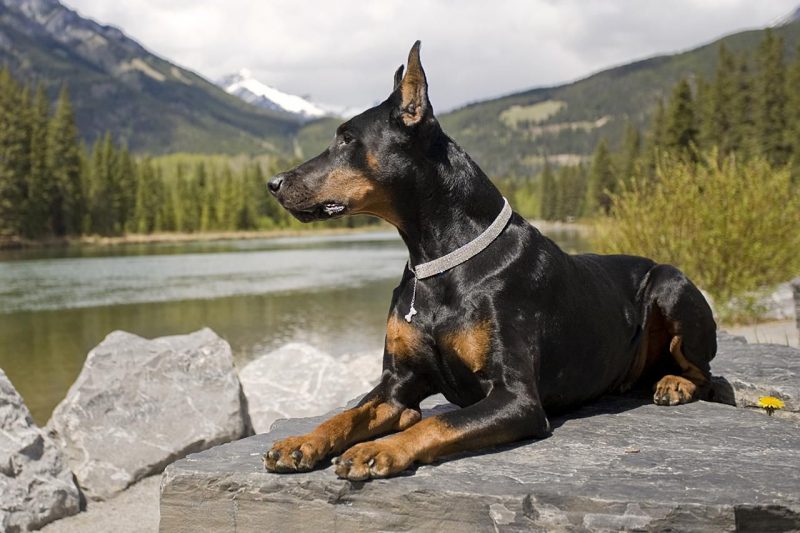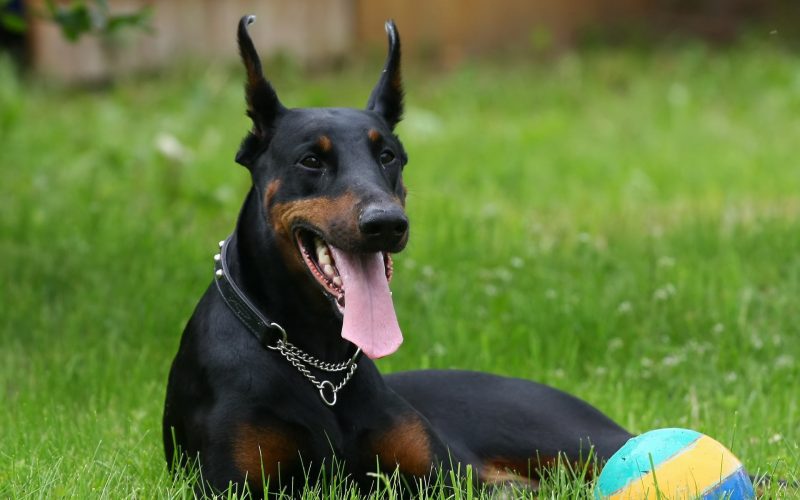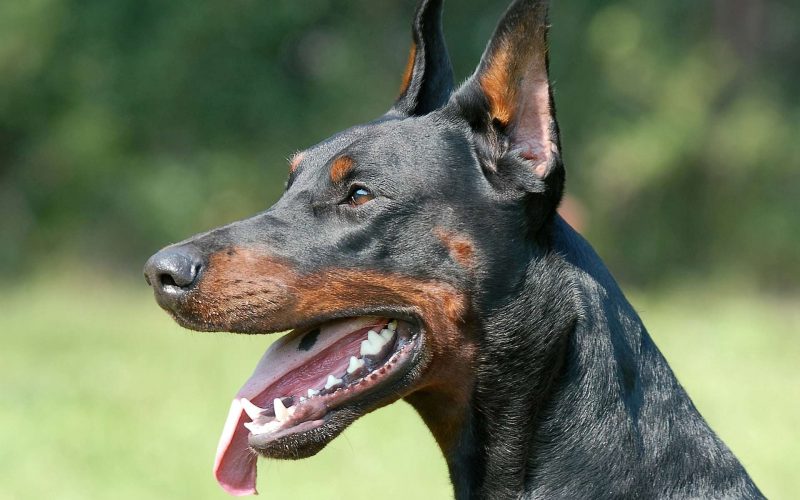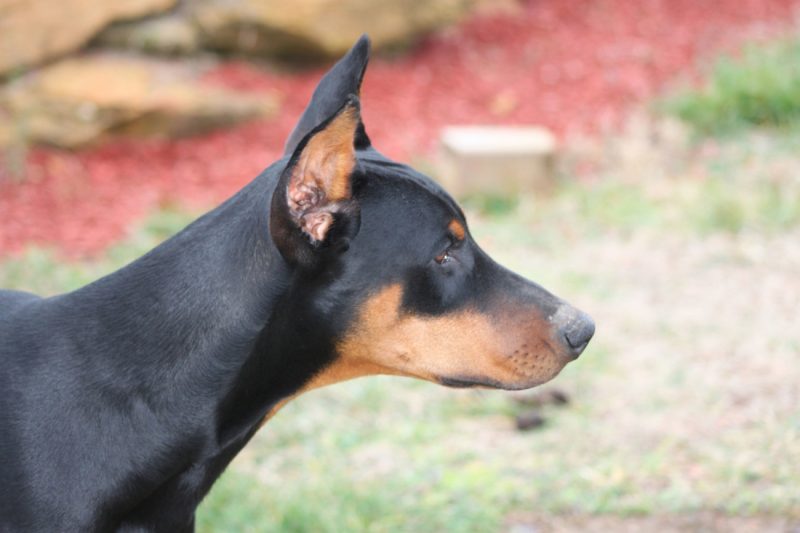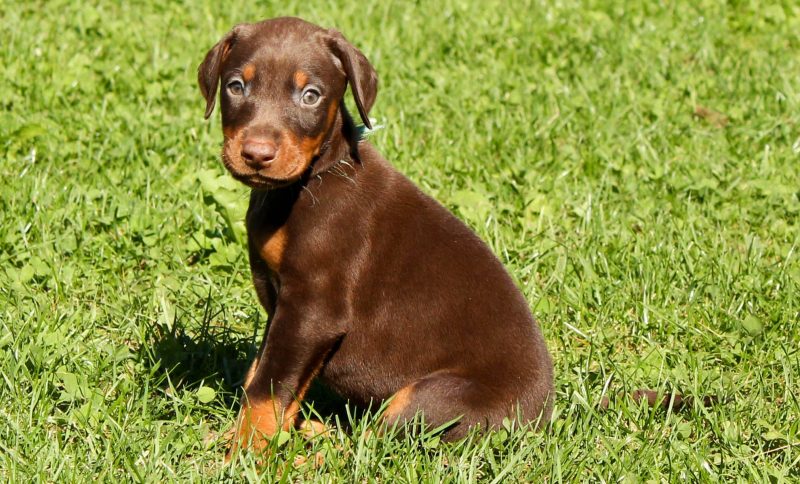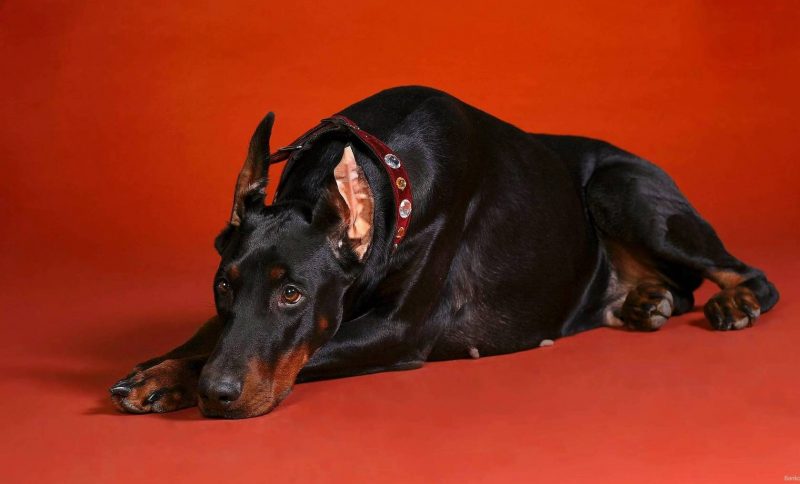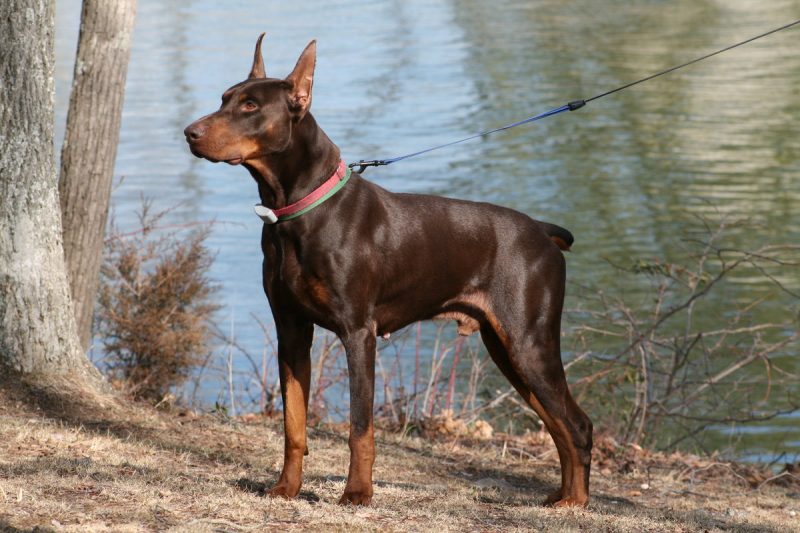Doberman Pinscher is a beautiful dog - strong, fit, elegant. It causes sincere delight in some people, fears in others, but leaves no one indifferent. But before you get this wonderful breed, it is advisable to have an idea about it.
Material Content:
History of breed origin
The breed was bred at the end of the XIX century in Germany. It bears the name of its creator - Friedrich Luis Dobermann. By the nature of his activity, he often transported large sums of money, so he needed a dog that would be an ideal defender against intruders. Such a dog became a Doberman.
Among the ancestors of the Dobermans were terriers. The representatives of the breed also have the blood of German Pinschers, Rottweilers, Greyhounds and German Shepherds. There is a version that the prototype for creating this beautiful dog was the dwarf doberman pinscher. This small breed, however, is incorrectly called the Doberman, it appeared much earlier than Karl Doberman began to breed dogs. The first information about the miniature pinschers dates back to the 15th century.
The new breed Dobermann Pinscher was first shown at an exhibition in the city of Efrurt in 1897. By the beginning of the 20th century, there were about 1 thousand dogs of this breed in Germany.
The excellent official qualities of the Dobermans were universally recognized, they served in the police, helped to search and neutralize criminals, carried out military service. During World War II, several members of the breed were officially enrolled in the U.S. Navy.
In 1994, the FCI standard for the breed, edited back in the 60s, was edited, the blue-tan color was excluded from it. Germany remains the leader in breeding Dobermans.
Description of Doberman Pincher
Dogs are above average growth; they are lean, muscular and graceful. The slender silhouette is somewhat reminiscent of a hound, but the bones are heavier. The tail and ears are most often cropped, the hair is short, shiny, smooth.
A balanced temperament allows Dobermans to master any activity perfectly.
They make excellent guards, bodyguards, bloodhounds.
Even if you meet a mini Doberman Pinscher on a walk, try not to anger him. The dog has a bold character and can stand up for himself and his master.
Life span
The maximum life expectancy of Dobermans is 16 years. Dogs are in good health, vaccinations against rabies and various infections should be done on time.
All other diseases of a non-communicable nature are associated with malnutrition. If the dog is not very active, he has dull hair, eyes turn sour, unformed stools, muscles are not beautifully developed - these are all manifestations of malnutrition.
The purpose and nature of the dog
Each Doberman has its own temperament, with proper training and education, the dog is great for living in a family, gets along well with children. It is important to choose a decent breeder and buy a puppy with a good pedigree - the character of an adult dog depends on heredity.
Nowadays, Dobermans are more often kept as companion dogs, pets. With proper training, they can be good defenders. There is no unmotivated aggression towards other people and animals in trained dogs.
The nature of the Doberman Pinscher dog is vigilant. The animal is always on its guard, carefully watches everything that happens and in case of a threat to the life of the owner or his property, he immediately comes to the rescue.
Breed standard and puppy selection
This amazing dog combines elegance and power. Strong muscles are trained by constant motor activity, Dobermans cannot sit still for a long time.
Description of the breed:
- head shape in the form of a blunt wedge;
- the neck is proportionally long;
- lean physique and strong muscles;
- wide chest
- a tightened belly;
- slender limbs with powerful muscles and strong bones, compact paws;
- in males, growth at the withers is from 68 to 74 cm, weight is up to 45 kg, bitches are slightly smaller.
In Russia, only two colors are allowed for show dogs - brown and tan and black and tan. The Doberman bred abroad has differences from the domestic Doberman - it also recognizes gray-tan and white coat color, and it is not customary to stop the ears and tail.
You should not rush when buying a puppy. Doberman is naturally choleric, an excitable dog. Some breeders do not monitor the working and psychological qualities of manufacturers. A puppy acquired from such people can grow up shy or aggressive.
When visiting the nursery, you must pay attention to adult animals that are parents of the litter. If adult Dobermans are satisfied with their behavior and achievements at exhibitions, you can safely buy a puppy.
Doberman is a working group of dogs, and in breeding without tests in the psyche and health they are not allowed. Therefore, you can safely ask the breeder for the relevant documents.
Maintenance, care and feeding
It is difficult to keep such a dog in a small apartment, it is quite large. When kept in a country house, a pet can throw out its indefatigable energy in a fenced yard. Sometimes the Doberman knocks down his elbows, bald spots appear, so you often need to change the litter.
Feeding
It is very convenient to feed Doberman dry food, preferring premium and super premium products. They are expensive, but more useful than feed of economy class.
Experts do not recommend mixing natural food and dry food so as not to upset the balance of nutrients. If the dog has health problems, the veterinarian will help you choose a special feed.
Some owners choose natural food for the dog.
- About 50% of the dog’s diet in this case should be lean, lean meat (chicken, beef).
- Useful meat offal (liver, scar), fish (boiled, boneless, 1 - 2 times a week).
- Fat-free cottage cheese can be given daily, soft-boiled egg, 2 times a week.
- Another 20% of the diet is cereals: oatmeal or rice porridge, sometimes buckwheat.
- Fruits (apples) and vegetables are useful to the dog - cauliflower, carrots, beets, parsley with dill, they should be 30% of the diet daily.
You can not give:
- pork;
- sausage;
- tubular bones of a bird;
- mashed potatoes and bread;
- onion;
- sorrel;
- white and red cabbage;
- alcohol;
- chocolate;
- raisins;
- banana and peach;
- milk (only possible up to 4 months).
An adult dog is fed 1 to 2 times a day half an hour after a walk.
Docking the ears and tail
Doberman puppies have hanging ears. Previously, they were stopped in 1.5–2 months, then wrapped up, and they wore a “crown” for about a year until the ear cartilage became stronger. The tail to 2 vertebrae was also stopped.
Since 2016, animals with cropped ears and tails cannot participate in European exhibitions. Breeders have to get used to new standards.
Hygiene and walks
Dog care is minimal. The coat is straight and short. If it is very cold outside, it is advisable to bring the Doberman to walk in dog clothes.
Most Dobermans do not like water, so you should not force a pet to swim in a reservoir in the summer. A dog should walk an average of 5 km per day. If you close her house for a long time without walking, the apartment will be a pogrom.
The dog is very active and emotional, and often suffers from this. Seeing a bird, it can easily run out onto the road. Having completed a course of general training, it becomes more obedient. But for walking it is advisable to choose a quieter place, where there are not many people.
Doberman Pincher Training
Dobermans are trained remarkably and are considered one of the smartest breeds on Earth.
In order to learn how to execute commands, the dog needs to be interested - reinforce the proper behavior with a treat.
Doberman chooses one owner for himself. It is important that the pet recognizes the owner's authority, otherwise it will begin to dictate its living conditions in the apartment, and it will be very difficult to cope with it. With the help of training, you can adjust the behavior of the Doberman, but the priority should be mutual understanding between the owner and the dog.
It is necessary that there are no contradictions in the upbringing of the dog - the prohibitions must be consistent. Unpleasant behavioral patterns are most often caused by excessive Doberman emotionality, so upbringing needs to be devoted to a lot of time.
Advantages and disadvantages of the breed
Advantages of the breed are obvious. Dobermans are beautiful and graceful, loyal to the owner, smart, get along well with other animals, are the best guards of the canine world.
All the shortcomings are reduced to the active temperament of the dog. This breed is not suitable for everyone - a dog needs to be given a lot of attention, because it is very energetic. Inactive people with a sedentary lifestyle, Dobermans are not suitable.



